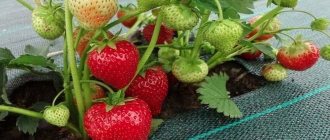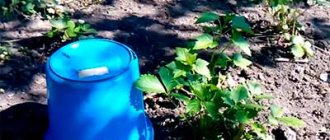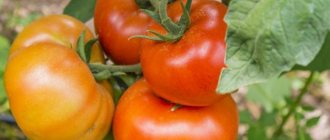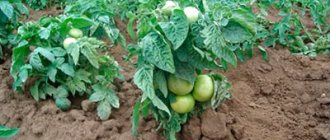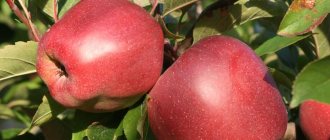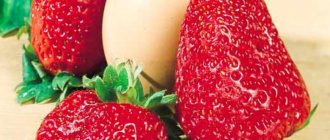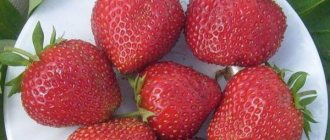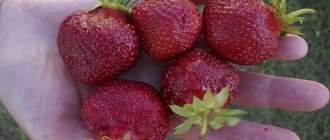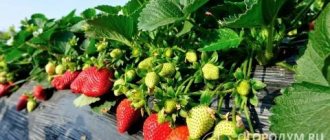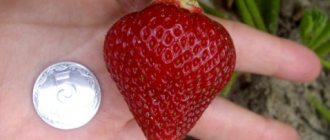Description of berries.
The berries of the Galya Chiv strawberry variety are large, up to 40 grams, and have a regular, conical or truncated conical shape. They have an attractive red-orange glossy color, medium-hard flesh, sweet, with a very pleasant taste. The fruits are evenly colored. The berries of Galia Civ are showy and pleasant. The taste qualities of the variety are excellent - the berries contain a significant amount of sugars, they have a charming aroma of tropical fruits.
Productivity is high.
Significant resistance to transportation, safety during transportation and keeping quality make it possible to grow the Galya Chiv strawberry variety to obtain a marketable berry of excellent quality. Summer residents who love strawberries will also like this variety!
Growing and care
Using mulch in a layer of up to 5 cm not only protects plants from contact with the soil. Loose organic matter protects the plantings from weeds, preserves the bed from weathering of moisture - significantly reduces the time for caring for strawberries.
When ripe, large berries do not become dirty and retain an attractive presentation because they do not come into contact with the ground.
Galya Chiv cannot tolerate excess moisture - watering should be moderate, ideally drip. Excess water affects the taste of berries (unsaturated, watery) and provokes the development of rot. In the absence of precipitation, watering is necessary at 3 important stages of growth:
- on the eve of flowering;
- during the formation of ovaries;
- during filling and ripening of the crop.
For full fruiting, the whiskers are removed without waiting for the formation of layering. To obtain planting material, it is better to grow mother bushes separately - the flower buds are removed immediately, without waiting for flowering. All the strength of the bush goes towards the accelerated formation of layering.
To restore the nutritional composition of the soil, seasonal fertilizing of the strawberry bed is carried out.
| Year of cultivation | Feeding |
| 1 | Compost or humus at the rate of 1 bucket per 1 linear meter of row + 1 cup of ash |
| 2 | You can use a stronger composition of nitrogen fertilizing - 10 liters. (bucket) water 50 g urea and 1 glass of ash |
| 3 or more | Bushes at the age of active fruiting are fed 2 times (before flowering and after harvesting) with slurry (1:10) or a mineral composition: potassium chloride, ammonium nitrate and superphosphate in equal parts |
Attention!
Contrary to popular belief, there is no need to cut off old leaves after harvesting, especially in the Central region:
- old leaves trap snow in winter;
- old leaves continue to participate in photosynthesis;
- nutrient reserves from last year's foliage ensure an earlier harvest.
Reproduction
Galya Chiv in biological terms belongs to the classic varieties (not a hybrid). To avoid cross-pollination and loss of varietal qualities of the resulting seedling material, the variety can be propagated by sowing seeds. However, seed propagation is a troublesome matter, so vegetative propagation is much more widespread.
| Methods of vegetative propagation | Essence of the method |
| Rooting mustaches (air layering) | Approximately 5 tendrils are left on the mother plant. When a rosette forms on the shoot, the tendril is pinned to the ground (pressed with a weight) for better contact with the soil and quick rooting. Stepchildren are separated from the mother plant after about 1 month, when a developed root system is formed |
| Dividing the bush | The mother bush is dug up, cut into horns, and the lignified part of the rhizome is removed. The cuttings are immediately planted in a permanent place |
Galya Chiv reviews.
I would not say that the variety is super-yielding - there are a lot of berries, but the average weight of berries is 25 - 30 grams, although sometimes they appear weighing 50 grams, but this is rare.
The taste is excellent, but there is a problem when picking the berries (first year, frigo seedlings, A+).
Among my varieties, only Syria and Galya Chiv have such good yields in young plantings; other varieties have a weaker first harvest. The only drawback is that the tear is disgusting, it comes off every time in different places.
In the 2nd year, the bushes of the Galya Chiv variety are generally gigantic, there are a lot of berries, but they are all medium-small with a few large berries. Despite the heavy rains, it was very sweet.
Rules of care
It is not difficult to care for Galya Chiv - this strawberry is unpretentious and will not cause much trouble for the gardener. But growing a late large-fruited variety also has its own characteristics:
- After planting, the bushes are watered almost every day, constantly monitoring the degree of soil moisture.
- It is best to water mature strawberries by sprinkling or using a drip irrigation system for watering.
- If you mulch the soil with straw and lay agrospand on top, garden strawberries will never get fungal infections.
- Every 2-3 weeks it is recommended to feed strawberries with mineral complexes or organic matter dissolved in water (bird droppings, cow manure).
- Carry out preventive treatment of Gali Chiv against pests and infections, spraying the bushes with special preparations several times a season.
- Trim off excess ovaries and inflorescences to prevent overloading of bushes and regulate the size of the berries.
- Dig up garden strawberry tendrils to propagate the variety. Or trim the tendrils if propagation is not required, as they draw a lot of energy from the plant.
- In the fall, clear the bushes of dry leaves, diseased shoots and other debris.
This is Galya - a description without cuts
Description of the variety with all its disadvantages and advantages - not based on advertising publications - in the opinion of farmers, breeders, gardeners and collectors. Introductory part – with reference to the copyright holder.
Galia CIV is a late Italian variety from Consorzio Italiano Vivaisti, a consortium of Italian nurseries CIV Medium-late, late ripening. According to the copyright holders, it requires a long cooling period and is suitable for continental climates. Positioned by the authors as suitable for the central, northern, mountainous regions of Italy, for a continental climate, incl. Eastern Europe, continental Russia.
It is recommended for cultivation on commercial plantations in small quantities due to the lack of the necessary high transportability for transportation over long distances, for personal farming, and for gardens. Many of their characteristics - heterogeneous shape, often spherical, light-colored flesh - have not made it the most popular on the market - and especially tight tearing.
In the photo, Galya Chiv's strawberries are of different sizes, but beautiful. The first collections are pleasing with their size, but something needs to be done about the variety of shapes...
Late ripening, 12-15 days later than Elsanta, in central Russia, in the conditions of the Black Earth Region it ripens in early to mid-July. The collections are relatively extended, occupying almost the entire month of July (in the conditions of the central black earth zone). Productivity is high, at least 500-700 g/bush - depending on the planting material (with frigo - about 300 g), and the age of the plants. In the second or third year of full fruiting, productivity drops.
- The bush is powerful, energetic, medium spreading, with excellent growth energy. In the second year, a majestic, luxurious, multi-horned variety grows - but in general the variety does not please with its longevity: already in the second year there are few large berries that bear full fruit,
- Peduncles are multi-berry, bearing up to 20 pieces at a time. ovary, located flush with the leaves.
- Flowers are medium to large, rich in pollen.
- The whisker formation is good - a sufficient number of whiskers for reproduction with a large number of rosettes.
- The shape is cone-shaped (less often cone-shaped-truncated), more often regular, although it cannot boast of uniformity, without a neck. Contrary to the established monotony, breeders often note the presence of both regular conical fruits and almost round ones. The first largest ones may be comb-shaped. The weight of the first heaviest ones reaches more than 40 g, with an average weight of 20-25 g.
- It is famous for its difficult detachment - it is tightly removed in full ripeness due to strong powerful peduncles and strong adhesion of the sepals.
- The color is orange-red, rich, does not darken. The pulp, or rather the core, is whitish.
- The taste is sweet, with a high sugar content even in the rains. No versatility - experienced field growers criticize. There is no brightness that the subtle sourness gives, there is no bright aroma - strawberry, subtle, fragrant. Perhaps the opinion is biased - taste qualities depend on specific soil and climatic conditions and agricultural technology. And - from taste preferences. The only thing is that in comparison with the same French dessert ones, the best of the Dutch or the same ones from CIV, it loses, according to some gardeners.
- Winter hardiness is sufficient for the continental climate of Russia, Ukraine, and Belarus.
Susceptibility to diseases, according to Italian farmers, is low - thus, low resistance to powdery mildew, spotting, and gray rot is noted. Relative tolerance to powdery mildew.
- A bad lead - this flaw will be remembered by many and disliked by many. There is such a thing: it separates poorly, incl. Farmers and gardeners joke about the sepals - even if you cut them with scissors. Just a joke: for a commercial plantation this is a significant drawback. At technical ripeness, especially hard fruits are damaged. Nevertheless, many put up with it - they adapt, explaining the delicate moment to the collector. and all for the sake of decent taste and excellent productivity.
- Abundance is good, but not too much: the simultaneous development of a large number of ovaries leads to the presence of both individual large and small, poorly developing, non-ripening fruits when the planting is dense, this moment is very obvious. Another option is rationing. Removing some of the small flowers on medium-sized rosettes will probably improve the situation: the fruits will be more uniform, larger, with a somewhat extended harvest period.
- Does not like damp climate, excessive watering, long rains - during the rainy season it requires preventive treatments with fungicides against rot;
- At the same time, if there is insufficient watering, it will not show high heat resistance, incl. freshly planted seedlings - in heat, drought without sufficient irrigation, attacks are possible.
- In transportation, despite rumors about its softness, it is acceptable: suitable for the fresh local market. However, density directly depends on the nutritional pattern and soil and climatic conditions. Yes, transportability and keeping quality cannot be compared with leading industrial ones, but with sufficient addition of microelements at the stage of ovary and fruit formation, there will be no complaints about softness. In addition, packaging: do not put it in tall and deep containers, pour it into boxes in a multi-layered mound - the recommendations are standard.
- When planting frigo seedlings, especially at the end of summer, it is better to remove some of the flower stalks if you plan to propagate, gardeners share. And during spring frigo, it is more advisable to do so.
But these are the collections at the end - the average mass is very small. The first ones, yes, are impressive in size, the rest are medium-small, especially in the second year. Firstly, yes, there is something to brag about
- In disparity: lack of uniformity - in the second half of the harvest it becomes smaller, due to multi-berry peduncles there are many different-sized fruits - from large to miniature. There are fewer large ones - in the total mass, most often, especially at high densities, the berries are medium-sized.
- Durability: in the first year, especially when planting high-quality seedlings, the situation is encouraging - there are a lot of large fruits. In the second year of fruiting there are only a few large ones, the average weight is medium-small - this is how gardeners comment on durability, one of the criteria for choosing a variety in Europe. It is no coincidence that industrialists and ordinary farmers prefer to manage their fields in a one-year crop: productivity is higher, there are no extra labor costs, no processing costs - it turns out it is more profitable. If there are varieties that, with high agricultural technology, bear fruit almost equally for 3 years, and in the 4th year they are pleasing - this is not about Galia: alas, the Italian is getting smaller, the luxurious huge ones become completely scarce in the second year.
- Tight tearing: in technical ripeness it can be damaged, in full - it’s simply tight. Even if you cut it with scissors, gardeners complain and laugh.
- Due to the high removal of microelements by a powerful plant with intense growth energy, it is demanding on fertilizing - with all the ensuing consequences. Perhaps this is the reason for the too low density. However, Italian breeders also have an unflattering opinion about the transportability of the variety.
- The taste is too simple - sweet, without versatility, without strawberry aroma. It can’t be empty and insipid – it has received plenty of sun and moisture – it makes me happy. And criticism - from the evil one and from poor soil, lack of mineral nutrition - is defended by its adept farmers, who grow for sale not in miniature beds.
- For many farmers who grow products for the local market on an average, small scale, not only beauty is important - and Galya can boast of it, especially at first. Color – in Europe, for example, lighter berries are more expensive. Here, in the post-CIS, there is a generally accepted opinion: light is green, the darker the better - this is how farmers who focus on the local market argue. And the white core, light flesh does not leave much chance: we love red, but alas and ah, red. Large producers, focusing on wholesale, are partly at risk - but most would not dare to allocate large-scale plantings for different-sized products. No, there are brave ones who allocate half a hectare or more - but there are not many of them, and they cannot be called on an industrial scale.
It’s a pity that the variety, worthy in many respects, turned out to be a sad find for many - the Galyachiv strawberry, also known as Galya Chiv, has reviews as contradictory as any of the latest Italian new products. Having poured a barrel of ointment, figuratively speaking, let us remind you of the best features with a spoonful of honey - and it is not small.
The culture has fans, and there are many of them. I like the early fruiting, the productivity of the first harvest - in comparison with others, they are great, very large and, no matter what they say, objectively sweet and tasty strawberries. And its quantity - productivity is not at the level of hard-working industrialists, but decent. I like the timing - mid-late.
They play a decisive role in the choice. Among the mid-late, late varieties, in fact, there are not many worthy of attention for commercial production - despite the apparent abundance. Perhaps this is the reason that many people do not refuse the Italian Gali: after weighing all the risks, accepting all the conditions of the fastidious one, they agree to have a different-sized, but beautiful and sweet berry. As long as there are those who need it, let the Italian woman live in our fields, let her bring joy in response to the care of her generous master’s hand. Happy harvest!

